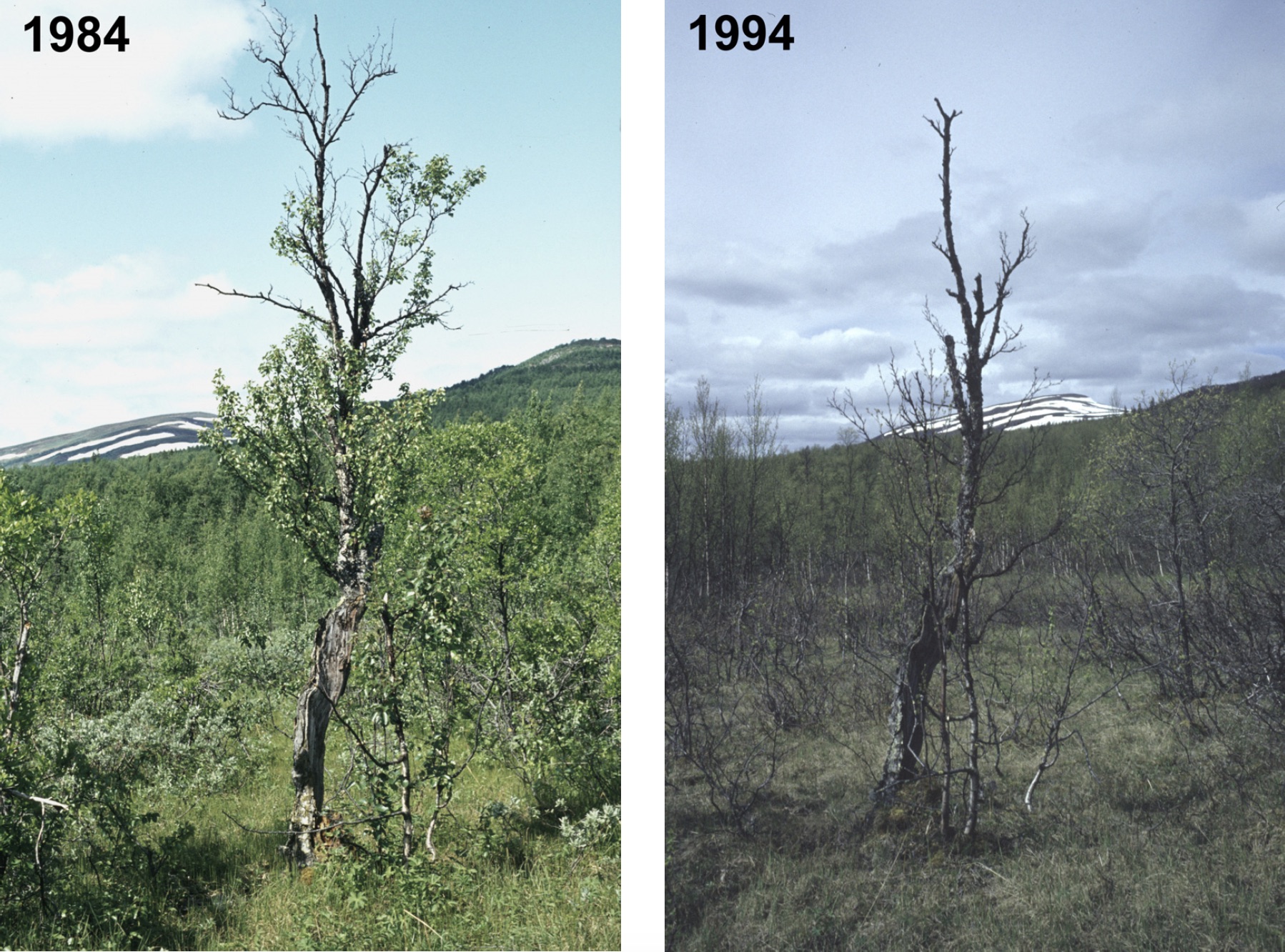The 37-year dynamics of a subalpine passerine bird community, with special emphasis on the influence of environmental temperature and Epirrita autumnata cycles
DOI:
https://doi.org/10.34080/os.v14.20236Keywords:
population dynamics, species richness, food availability, community compositionAbstract
The breeding passerine bird community of 9 km2 of a primeval subalpine birch forest in Swedish Lapland was censused yearly from 1963 through 1999. The community density remained stable, fluctuating around a mean value of 403 ± 85 territories/km2. Species richness increased by an average of one species every four years. Twenty species made up 98% of the community and Phylloscopus trochilus (40%) and Fringilla montifringilla (19%) remained the dominant species. The species turnover rate between successive seasons was on average 30%. The mean temperatures in June and July were positively correlated to the community density two years and one year later, respectively, less so for the densities of the individual species. Fringilla montifringilla increased in density during the first two years of each Epirrita autumnata caterpillar outbreak, whereas the other species responded only weakly or not at all. All species tended to fluctuate in parallel (no significant opposite trends) which together with the other results suggests that the investigated bird community is far from saturated.
Downloads

Downloads
Published
How to Cite
Issue
Section
License
The copyright of each contribution belongs to the author(s), but all contributions are published under a Creative Commons license, so that anyone is free to share and reuse the contribution as long as the copyright holder is attributed.







